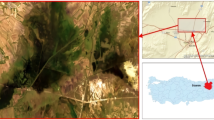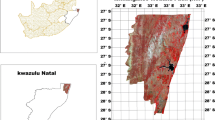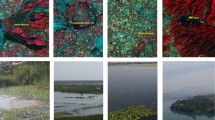Abstract
Wetlands are very significant part of our environment. They improve water quality of its area and also makes local climate fairly moderate. Among the fertile areas of environment system, wetlands are the one. As the wetland decreases, it brings changes to weather pattern and diminution of water level below soil. Like many wetlands in India, wetland of Varanasi district is also facing with danger and diminishing day by day. Due to the rapid increase in urbanization of the city and population explosion over the last two decades, the encroachment process is taking place at a brisk rate; therefore, wetland area is reducing accordingly. So objective of this work is the mapping of wetland area in Varanasi district with the help of remote sensing using multi-date Landsat satellite data for two particular years 1990 and 2016. Water pixels have been demarcated by using Normalized Difference Water Index (NDWI). In the result of the study, it has been found that wetland area’s reduction has been around 43% for the period spanning around 26 years. This is a cause of great concern that wetland area is reducing at a very fast rate; therefore, it is urgent need to protect these wetland area as this is one of the major components for sustaining balance in our ecosystem.
Access provided by Autonomous University of Puebla. Download conference paper PDF
Similar content being viewed by others
Keywords
1 Introduction
Technology of remote sensing is very widely used to detect change in wetland area. Images taken in different dates are compared, analyzed and statistical computation based on indices were performed. These wetlands are very important for aquatic ecosystems [3]. Main features of wetland are that they remain waterlogged for a considerable period of time. Their physico–chemical and biological behavior changes as they remain waterlogged for such a long period. It allows development of plant and animal communities on these wetlands. [6]. Different types of wetlands are peatlands, marshes, swamps, mangroves, shallow lakes (less than three meter deep), floodplains, littoral zones of lakes. These wetlands can be found mostly in the region starting from tropical zones to temperate zones. Most wetlands are extremely productive and support high biodiversity. The places which have abundance of wetland, those places have mostly home for successful human settlements, normal climates occur on those places and balanced ecosystem lies over there. Wetland performs several important functions such as controlling of floods, storage of water in abundance and its purification, protection of shorelines and hinterlands and economic sustenance to the people [5, 10]. Millions of people directly and indirectly depend on wetland system. They contribute to imperative processes such as flowing of water through the wetland into streams or sea; decomposition of organic matter; releasing sulfur, carbon, nitrogen to atmosphere; and breeding place for all the organism that requires wetland for living. The direct advantages of wetlands are water supply, timber, fish production; indirect advantages comes from the functions occurring inside the ecosystem such as ground water recharge, flood control and storm protection. Wetlands also are of great importance to indigenous people as a part of their cultural and ethical heritage. The areas, which have termed as wetlands, they will have less flooding during heavy rainfall as compared to areas which have no wetlands. There is retention capacity of wetland to hold extra flood water. Vegetation in wetland area acts as an important factor to control erosion which in turn becomes helpful for shoreline stabilization and storm protection. Parameters for strong eutrophication like phosphorous and nitrogen have been stored by wetland areas and thus wetland retains nutrients. They are also helpful in absorbing the sewage and thus purify the water supplies [8]. Ground-surveying methods for delineating wetlands are very old and traditional methods. These methods are very costly and very time-consuming. To save time and money, remote sensing technology and methodology can be implemented. Another form of remote sensing, i.e., aerial photography can also be helpful for identification and delineation of spatial extension of wetland (e.g., National Wetland Inventory). With periodical movement of satellites over a particular location, information of that location in the form of multi-date and multi-spectral images can be obtained. If environmental condition for earth surface changes, then that can be monitored and captured by satellites. Landsat series satellites like multi-spectral scanner (MSS) and later Thematic Mapper (TM) has become very cost-effective and easy for acquiring multi-date images over a greater variation of temporal and spatial scales than that was possible with aerial photography. For larger wetland monitoring purposes, Landsat MSS satellites have been used widely. But the use of this Landsat MSS satellite has been facing several constrain because the image acquired by this satellite has poor geometric accuracy along with poor spatial, spectral and radiometric resolutions of the acquired image. Landsat TM satellite launched during 1980s, and it has spatial resolution of 30 meters. So with this satellite data, it is quite convenient and more possible to analyze relatively smaller areas. Earlier with MSS satellites due to their poor spatial resolution, the remote sensing analysis for smaller area was not possible [1, 2, 9, 11]. The main purpose of this study is to determine the spread of wetland area and temporal change in wetland area of Varanasi district for different years (only two years namely 1990 and 2016 considered here) with the help of satellite generated data.
2 The Study Area
In this work, Varanasi and its adjoining areas have been selected which is a famous Hindu holy city. The city and its adjoining areas (Varanasi district) lie between 25°14′ to 25°23.5′ N latitude and 82°56′ to 83°03′ E longitude. Ganga, Assi and Varuna rivers flow through this district. From 2001 census, the estimated population of this area is roughly around 32 lakhs. This district consists of two tehsils, eight blocks and 1336 villages. Climate of this area is humid subtropical type with extreme summer and winter temperatures. Summer season has very long duration with the monsoon season in between. The average temperature in summers hovers in the range of 32–46 °C. Winters season lies from December to February. The average temperature in winters hovers around 5–15 °C. The average annual rainfall is 1110 mm. Hot dry winds known as ‘loo’ is a common phenomena in summers season and fog is a typical phenomena of winter season [7]. The satellite data used in this study were Landsat TM for the year 1990 and Landsat OLI for the year 2016. All the satellite data that were used in this study was from the month of November.
3 Methodology
Creation of the database: The study area topographic sheet is downloaded from e-nakshe website www.soinakshe.uk.gov.in at a scale of 1:50,000 and the topo-sheet numbers which are covered in the study areas are as follows: G44Q10, 44Q11, 44Q12, G44Q14, G44Q15, G44Q16, G44R2, G44R3, G44R4, and topo-sheets are digitized and converted to vector map in Q-GIS software. The location map of study area is shown in Fig. 1.
3.1 Analysis of Remotely Sensed Data and Indices Calculation
Three major category defines wetland, i.e., wetland (aquatic vegetation), water and marshy land (waterlogged area), and these categories have to be mapped with the help of remotely sensed data. Spectral signature of water is quite different from other features of land like vegetation, agricultural lands, built-up lands but still the detection of pixels of water at the water/soil boundary is tough, and it requires good skills of analyst. Representation of deep water bodies in image is not a problem as spectral signatures of deep water bodies are quite different, but water bodies of shallow depth can easily confuse the interpreter with soil along the boundary of the water bodies. The pixel which is on the edge of water/soil boundary, is known as a mixed pixel in this case as it contained two features i.e. soil and water. So a proper indexing is required to highlight the water features in a more prominent manner. Thus an another band-ratioing index known as Normalized Difference Water Index (NDWI) is used. By following the formula, it is calculated:
where GREEN is a wavelength that reflects green light and NIR is a wavelength that reflects near infrared light. When a multi-spectral image which has reflectance value in green and NIR band is processed by above formula, then water bodies in the image will show positive values of NDWI and non-water features will show zero or negative values of NDWI.
Since Varanasi is a densely populated area and it consist of large number of built-up land, so here efficient suppression cannot be done by NDWI because NDWI will give more or less the same reflectance value of mixed pixels that consist of both water and land features (mainly built-up pixels). So, a new index will be required to solve this problem, and hence, NDWI has to be modified or changed to tackle the above mentioned problem. A modified version of NDWI is used and in this index MIR (mid-infrared) band is used instead of NIR.
The modified NDWI (MNDWI) can be formulated like:
where MIR is the wavelength that reflects mid-infrared light. As one compute MNDWI, it will have more suppression of non-water body features because soil and vegetation will have negative values for MNDWI as they reflect more in MIR region of electromagnetic (EM) spectrum than in comparison with green region of EM spectrum. Same scenario happens for built-up pixels as well. But water bodies absorb more light in MIR region of EM spectrum, so water pixels will show large positive values. Thus, water and non-water features can be distinguished easily after applying MNDWI formula [4].
4 Result
Instead of NDWI, the modified NDWI has been calculated and change in wetland has been tabulated in Varanasi and its adjoining areas. Classification done with the help of remote sensing images can be error prone. For this accuracy check has been done, and error in classification has been minimized. Field visit has been made for ground truth of data.
From Table 1, it can be seen that total wetland area has reduced from 90.41 km2 in 1990 to 52.20 km2 in 2016.
It can be clearly visible from the wetland area maps (Figs. 2 and 3) that in the year 1990, Varanasi and its adjoining areas had very large covering of wetlands, particularly several big patches of wetlands were found in north-western part of Varanasi district. Thereafter with due passage of time, wetland area gradually started to decrease, and then we can see that in the year 2016, it had been decreased almost half of the area that was in 1990. This rapid declination of wetland area is a major cause of concern for human society.
5 Conclusion
Wetland area of Varanasi and its adjoining area are reducing due to various factors such as silting, excessive encroachment and urbanization. The wetland area mapping has been carried out using remote sensing for a period of 1990–2016 and wetland area in this time period has been computed. It has been found that about 42% total wetland area has reduced in these years. Varanasi city is the fastest growing city along with the most polluted city of the India. These reducing wetlands are very serious issue for the environmentalist and ecologist who are especially serious about the reducing rate of wetlands. This study can be helpful for their research purpose and can be useful in the conservation of these wetlands.
References
Alsdorf DE, Smith LC, Melack JM (2001) Amazon floodplain water level changes measured with interferometric SIR-C radar. IEEE Trans Geosci Remote Sens 39(2):423–431
Chopra R, Verma VK, Sharma PK (2001) Mapping, monitoring and conservation of Harike wetland ecosystem, Punjab, India through remote sensing. Int. J. Remote Sensing 22(1):89–98
Gopal B (1994) Role of Ecotones in conservation and management of tropical inland waters. Mitt Int Verein Theor Angew Limnol 24:17–25
Hanqiu Xu (2006) Modification of normalized difference water index (NDWI) to enhance open water features in remotely sensed imagery. Int J Remote Sens 27(14):3025–3033
JerathN (1992) The environs and problems of Harike wetland; some strategies for conservation. In wetlands of India. In: Chatrath KJS (ed) Ashish Publishing House, New Delhi, India, pp 103–124
Mitsch WJ, Gosselink JG (2000) Wetlands, 3rd edn. John Wiley, New York
NWIA (2006) Uttar Pradesh Atlas
Ramachandra TV (2001) Restoration and management strategies of wetlands in developing countries. Electron Green J (15) (December)
Saikh M, Green D, Cross H (2001) A remote sensing approach to determine environmental flows for wetlands of the Lower Darling River, New South Wales, Australia. Int J Remote Sens 22(9):1737–1751
Sarkar A, Jain SK (2008) Using remote sensing data to study wetland dynamics—a case study of Harike Wetland. In: Sengupta M, Dalwani R (ed) Proceedings of Taal 2007: the 12th world lake conference, pp 680–684
Shepherd I, Wilkinson G, Thompson J (2000) Monitoring surface water storage in the North Kent Marshes using landsat TM images. Int J Remote Sens 21(9):1843–1865
Author information
Authors and Affiliations
Corresponding author
Editor information
Editors and Affiliations
Rights and permissions
Copyright information
© 2020 Springer Nature Singapore Pte Ltd.
About this paper
Cite this paper
Das, N., Ohri, A., Agnihotri, A.K., Omar, P.J., Mishra, S. (2020). Wetland Dynamics Using Geo-Spatial Technology. In: AlKhaddar, R., Singh, R., Dutta, S., Kumari, M. (eds) Advances in Water Resources Engineering and Management. Lecture Notes in Civil Engineering , vol 39. Springer, Singapore. https://doi.org/10.1007/978-981-13-8181-2_18
Download citation
DOI: https://doi.org/10.1007/978-981-13-8181-2_18
Published:
Publisher Name: Springer, Singapore
Print ISBN: 978-981-13-8180-5
Online ISBN: 978-981-13-8181-2
eBook Packages: EngineeringEngineering (R0)







